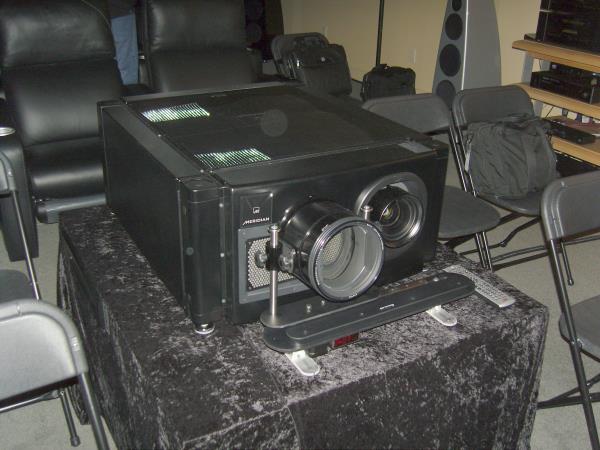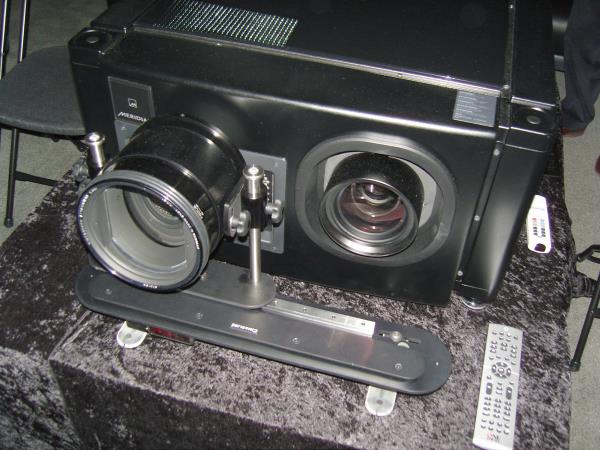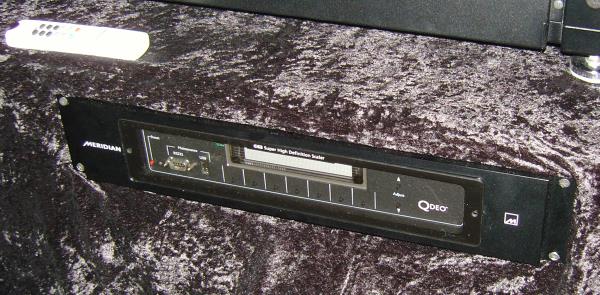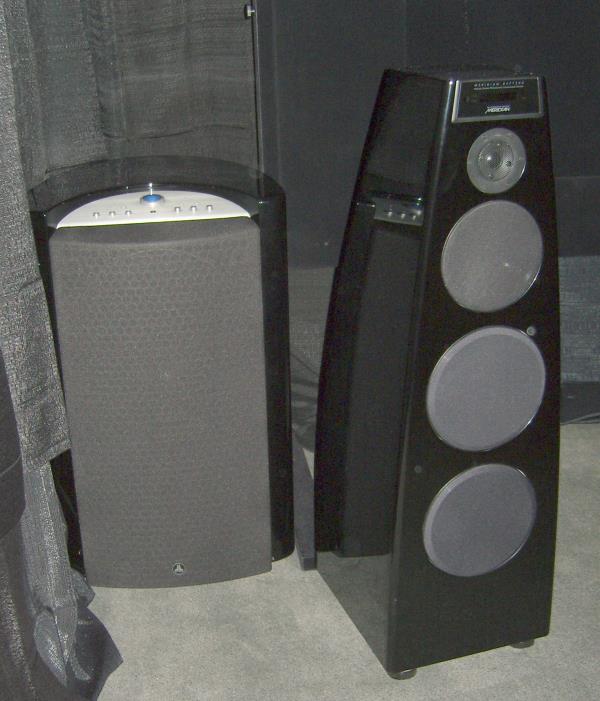On June 18, I attended the product debut of Meridian Audio’s new 810 projector, held at Definitive Audio, in Bellevue, Washington, which is very near Seattle. It has three D-ILA panels, 4,000 lumen output (maximum), and a native resolution of 4,000 x 2,500. Yes, you read that right, 4,000 x 2,500, and it is a consumer product too, not a projector for a commercial theater.
It is priced at $175,000, and the light engine is made for Meridian by JVC. The projector itself is assembled at Meridian’s factory in the U.K. It takes 4 days just to do the alignment, which is accomplished with a computer. Each 4×4 pixel area on the D-ILA panels can be individually calibrated to produce even illumination across the entire image. The detailed precise calibration is part of what you are paying for with this projector.
Here is a photo:

It is a really big projector and weighs about 130 pounds.
On the front you can see two lenses. The one on the left is anamorphic and a motorized control is used to move it in front of the main lens (seen on the right) when you want to watch 2.35:1 movies using the entire 16:9 chip area.
Here is a close-up of the two lenses.
On the rear are the connections, including four single-link DVI cables (at the left end of the projector) that are needed to carry the very high bitrate signal.
The processor which goes with the projector (included in the price) is shown below. It converts regular DVD video signals (480i) as well as 1,920×1,080 Blu-ray video signals to 4,000×2,500. To keep this in perspective, a 1,080p signal is 2 megapixels for each frame, and the processor converts it to 10 megapixels. That is a lot of horsepower.
Here is the equipment rack for the entire setup which included Meridian’s DVD player and SSP.
There was a full set of Meridian digital speakers, including some new ones that have upsampling capabilities built-in. Remember, Meridian speakers receive a digital signal from the SSP and the DACs in the speakers then convert it to analog signals for the amplifiers, and each driver has its own amplifier. Because the sound from a woofer is slower to get transmitted into the room, the power to the high frequency drivers can be delayed so that the sound from all the drivers goes into the room at the same time.
The subwoofers consisted of two JL Audio F113’s.
The image quality from the Meridian 810 was the best I have ever seen, in any theater, anywhere. Movies that were used included Patton and Cars. Patton was shown because it was shot in 70mm and the color depth was spectacular. As an animated feature, Cars had never gone through a lens until projection, so the detail there was just beyond belief. I got up close to the screen and could not see any pixels at all, in part because of the panel resolution, but also because Meridian uses a new process that involves an analog back plane behind the digital panel.
I also recorded a full high def video (1,920×1,080) of Bob Stuart – President of Meridian Audio – describing the projector system. Click on his photo below to see the video, encoded as a Windows Media Video file (*.wmv). Because the video is high resolution, it will take about two minutes for your player to buffer before the video starts to play, so be patient.
This was my first time attending the Definitive Audio event, which displayed a wide variety of new products. I stayed at the Woodmark Hotel in Kirkland (near Bellevue), right on the water. The entire affair was extremely enjoyable.








